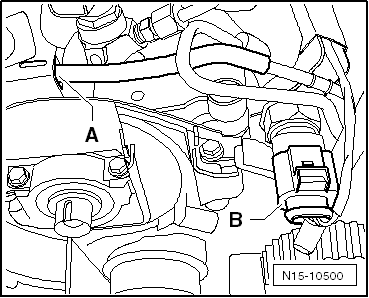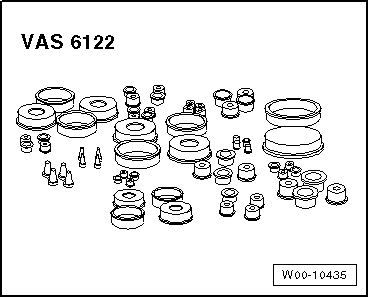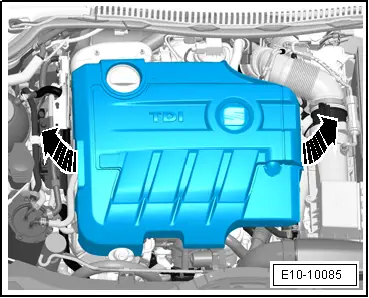| –
| Unscrew fuel pressure sender -G247-. |
| –
| Extract dirt from bore of fuel rail (threads and sealing surface). No mechanical tools should be used for this purpose. |
| –
| Seal open fuel rail bore using a bung from engine bung set -VAS 6122-. |

Note | t
| The fuel pressure sender -G247- has no sealing ring, but a deformable metal sealing. |
| t
| Note damage of the sealing surfaces (bite-edge sealing) and thread of the newfuel pressure sender -G247- . If the fuel pressure sender -G247- was inspected and is in order, another reuse is possible. |
| t
| Also check sealing surface at opening in rail. |
| t
| The beginning of the thread and the deformable sealing lip of the fuel pressure sender -G247- must be lubricated with Molykote grease. |
| –
| Screw fuel pressure sender -G247- on hand-tight. |
| –
| Subsequently tighten the fuel pressure sender -G247- on the prescribed tightening torque → Chapter. |
| –
| After installing fuel pressure sender -G247-, leave engine running at moderate speed for a few minutes and then switch off again to bleed fuel system. |

Note | The high-pressure connections must „not“ be opened for bleeding; fuel system bleeds itself automatically. |
| –
| Interrogate fault memory and erase, if necessary. |
| –
| Carefully check the entire fuel system for leaks. |
| –
| Renew the affected component if leakage still occurs after tightening to the correct torque. |
| –
| Perform a test run and depress accelerator pedal to full throttle stop at least one time. Then the tightness of the high-pressure system must be checked again. |

Note | If there is any air left in the fuel system, the engine may switch to the backup mode ('emergency running' mode) during the road test. Switch off the engine and clear the fault memory. Then continue road test. |
| –
| After road test interrogate the fault memory again. |
|
|

|

 Note
Note
 Note
Note
 Note
Note Note
Note Note
Note

 Note
Note
 Note
Note
 Note
Note Note
Note Note
Note